
Copyright 2020 by John Wiley & Sons, Inc. All rights reserved.
Published by John Wiley & Sons, Inc., Hoboken, New Jersey.
| Editor in Chief | Jeffrey A. Hirsch |
| Editor Emeritus | Yale Hirsch |
| Director of Research | Christopher Mistal |
| Production Editor | Kimberly Monroe-Hill |
No part of this publication may be reproduced, stored in a retrieval system, or transmitted in any form or by any means, electronic, mechanical, photocopying, recording, scanning, or otherwise, except as permitted under Section 107 or 108 of the 1976 United States Copyright Act, without either the prior written permission of the Publisher, or authorization through payment of the appropriate per-copy fee to the Copyright Clearance Center, 222 Rosewood Drive, Danvers, MA 01923, 978-750-8400, fax 978-646-8600, or on the web at www.copyright.com. Requests to the Publisher for permission should be addressed to the Permissions Department, John Wiley & Sons, Inc., 111 River Street, Hoboken, NJ 07030, 201-748-6011, fax 201-748-6008, or online at www.wiley.com/go/permissions.
Limit of Liability/Disclaimer of Warranty: While the publisher and the author have used their best efforts in preparing this book, they make no representations or warranties with respect to the accuracy or completeness of the contents of this book and specifically disclaim any implied warranties of merchantability or fitness for a particular purpose. No warranty may be created or extended by sales representatives or written sales materials. The advice and strategies contained herein may not be suitable for your situation. You should consult with a professional where appropriate. Neither the publisher nor the author shall be liable for any loss of profit or any other commercial damages, including but not limited to special, incidental, consequential, or other damages.
For general information about our other products and services, please contact our Customer Care Department within the United States at 800-762-2974, outside the United States at 317-572-3993, or fax at 317-572-4002.
Wiley publishes in a variety of print and electronic formats and by print-on-demand. Some material included with standard print versions of this book may not be included in e-books or in print-on-demand. If this book refers to media such as a CD or DVD that is not included in the version you purchased, you may download this material at http://booksupport.wiley.com. For more information about Wiley products, visit our website at www.wiley.com.
ISBN: 978-1-119-59629-5 (paper)
ISBN: 978-1-119-59637-0 (ePDF)
ISBN: 978-1-119-59634-9 (ePub)
INTRODUCTION TO THE FIFTY-THIRD EDITION
Once again we have the honor of introducing the Fifty-Third Edition of the Stock Trader's Almanac. The Almanac provides you with the necessary tools to invest successfully in the twenty-first century.
J.P. Morgan's classic retort Stocks will fluctuate is often quoted with a wink-of-the-eye implication that the only prediction one can make about the stock market is that it will go up, down, or sideways. Many investors agree that no one ever really knows which way the market will move. Nothing could be further from the truth.
We discovered that while stocks do indeed fluctuate, they do so in well-defined, often predictable patterns. These patterns recur too frequently to be the result of chance or coincidence. How else do we explain that since 1950 the Dow has gained 23053.95 points during November through April compared to just 3324.63 May through October? (See page 52.)
The Almanac is a practical investment tool. It alerts you to those little-known market patterns and tendencies on which shrewd professionals enhance profit potential. You will be able to forecast market trends with accuracy and confidence when you use the Almanac to help you understand:
- How our Presidential Elections affect the economy and the stock marketjust as the moon affects the tides. Many investors have made fortunes following the political cycle. You can be sure that money managers who control billions of dollars are also political cycle watchers. Astute people do not ignore a pattern that has been working effectively throughout most of our economic history.
- How the passage of the Twentieth Amendment to the Constitution fathered the January Barometer. This barometer has an outstanding record for predicting the general course of the stock market each year, with only ten major errors since 1950, for an 85.5% accuracy ratio. (See page 16.)
- Why there is a significant market bias at certain times of the day, week, month and year.
Even if you are an investor who pays scant attention to cycles, indicators and patterns, your investment survival could hinge on your interpretation of one of the recurring patterns found within these pages. One of the most intriguing and important patterns is the symbiotic relationship between Washington and Wall Street. Aside from the potential profitability in seasonal patterns, there's the pure joy of seeing the market very often do just what you expected.
The Stock Trader's Almanac is also an organizer. Its wealth of information is presented on a calendar basis. The Almanac puts investing in a business framework and makes investing easier because it:
- Updates investment knowledge and informs you of new techniques and tools.
- Is a monthly reminder and refresher course.
- Alerts you to both seasonal opportunities and dangers.
- Furnishes a historical viewpoint by providing pertinent statistics on past market performance.
- Supplies forms necessary for portfolio planning, record keeping and tax preparation.
 The WITCH Icon signifies THIRD FRIDAY OF THE MONTH on calendar pages and alerts you to extraordinary volatility due to expiration of equity and index options and index futures contracts. Triple-witching days appear during March, June, September and December.
The WITCH Icon signifies THIRD FRIDAY OF THE MONTH on calendar pages and alerts you to extraordinary volatility due to expiration of equity and index options and index futures contracts. Triple-witching days appear during March, June, September and December.
 The BULL Icon on calendar pages signifies favorable trading days based on the S&P 500 rising 60% or more of the time on a particular trading day during the 21-year period January 1998 to December 2018.
The BULL Icon on calendar pages signifies favorable trading days based on the S&P 500 rising 60% or more of the time on a particular trading day during the 21-year period January 1998 to December 2018.
 The BEAR Icon on calendar pages signifies unfavorable trading days based on the S&P falling 60% or more of the time for the same 21-year period.
The BEAR Icon on calendar pages signifies unfavorable trading days based on the S&P falling 60% or more of the time for the same 21-year period.
Also, to give you even greater perspective, we have listed next to the date every day that the market is open the Market Probability numbers for the same 21-year period for the Dow (D), S&P 500 (S) and NASDAQ (N). You will see a D, S and N followed by a number signifying the actual Market Probability number for that trading day based on the recent 21-year period. On pages 121128 you will find complete Market Probability Calendars, both long term and 21-year for the Dow, S&P and NASDAQ, as well as for the Russell 1000 and Russell 2000 indices.
Other seasonalities near the ends, beginnings and middles of months; options expirations, around holidays and other times are noted for Almanac investors' convenience on the weekly planner pages. All other important economic releases are provided in the Strategy Calendar every month in our e-newsletter,
Next page

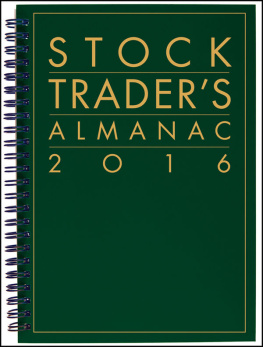
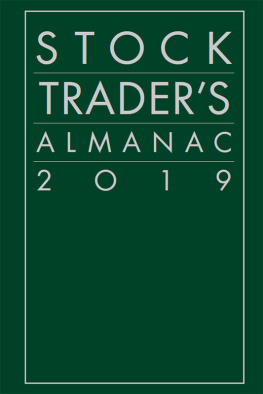

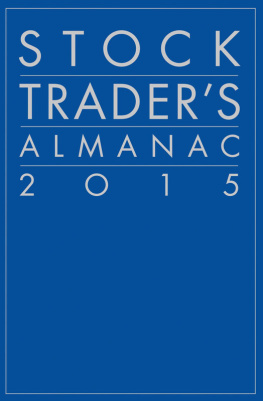

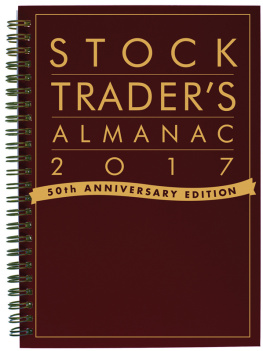
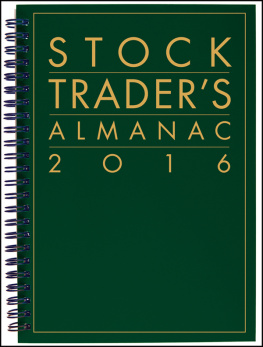


 The WITCH Icon signifies THIRD FRIDAY OF THE MONTH on calendar pages and alerts you to extraordinary volatility due to expiration of equity and index options and index futures contracts. Triple-witching days appear during March, June, September and December.
The WITCH Icon signifies THIRD FRIDAY OF THE MONTH on calendar pages and alerts you to extraordinary volatility due to expiration of equity and index options and index futures contracts. Triple-witching days appear during March, June, September and December. The BULL Icon on calendar pages signifies favorable trading days based on the S&P 500 rising 60% or more of the time on a particular trading day during the 21-year period January 1998 to December 2018.
The BULL Icon on calendar pages signifies favorable trading days based on the S&P 500 rising 60% or more of the time on a particular trading day during the 21-year period January 1998 to December 2018. The BEAR Icon on calendar pages signifies unfavorable trading days based on the S&P falling 60% or more of the time for the same 21-year period.
The BEAR Icon on calendar pages signifies unfavorable trading days based on the S&P falling 60% or more of the time for the same 21-year period.